Do you know how to evacuate cats in an emergency? Step one is to have a plan.
We all remember the countless tragedies, human and animal, in the aftermath of Hurricane Katrina. Almost half (44%) of the people who refused to evacuate during Hurricane Katrina said they did so because they felt they could not bring their pets with them. Nevertheless, all the years later, a recent poll showed that 35% of pet owners still don’t have an evacuation plan for their cats and dogs.
Take a few moments to make an evacuation plan for how you will evacuate with your cat and other pets in the event of a natural disaster.
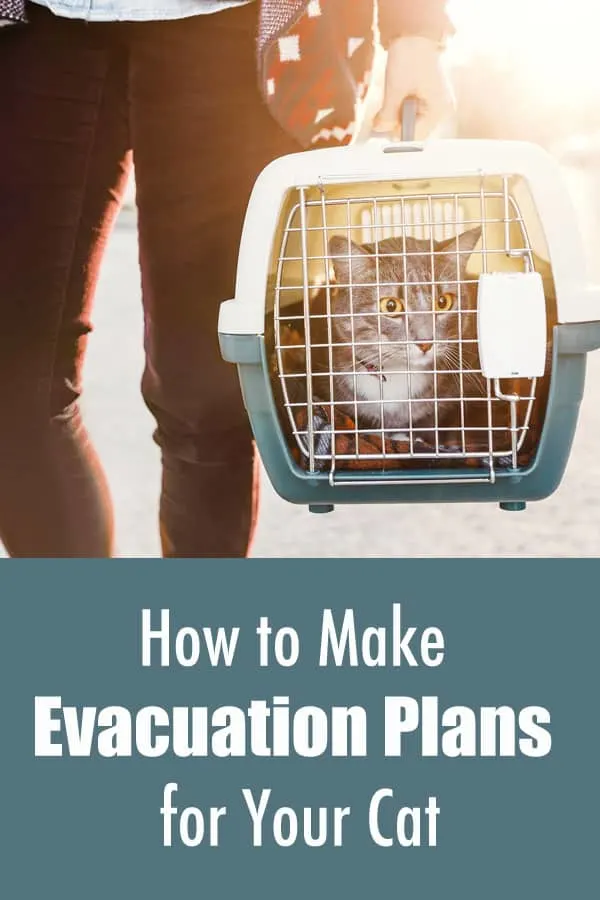
You don’t have to live in a hurricane zone to need an emergency plan. Wildfires, tornadoes, and floods displace many families and evacuation can sometimes be very sudden, meaning all of your family members may or may not be at home.
Everyone needs to know just what to do in terms of pet care in the event of an emergency evacuation–starting with always, always evacuating with your pets.
Get Your Cats Accustomed to the Carrier!
To make sure we could evacuate our cats in the event of a disaster with just a few minutes’ warning, we keep our cat carriers out and easily accessible.
Instead of only pulling out the carriers when the cats are headed to the veterinarian, we leave the carriers out and opened all the time.
The doors remain open and each carrier has a small, soft mat and a toy inside. Occasionally we’ll toss a cat treat inside.
We work to make the cat carriers a place where the cats WANT to be so there’s no struggle to get them inside the carriers in a fast evacuation. (Don’t miss our post on 13 ways to make your cat love the cat carrier!)
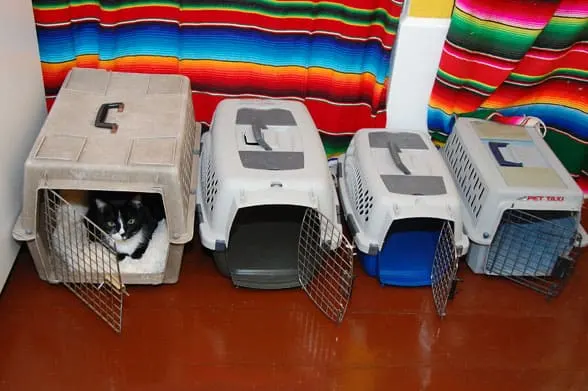
Make an Evacuation Kit
Just like you make preparations for the rest of your family, you’ll need to make sure you’ve prepared everything your cat will need in case of an evacuation.
You’ll need to make sure you take your cat with you, even if you have to go to a shelter where pets are sheltered separately. It’s important that pets never be left at home in an evacuation.
VCA veterinarian Donna J. Spector has an excellent list of packing items for your cat’s emergency evacuation kit. You’ve probably got many of these items on hand already but it helps to have them in one place so you can make a quick exit with your cat if you need to.
Along with your cat carrier, Dr. Spector recommends packing:
- Collapsible water/food bowl
- Canned cat food
- Cat toy
- Pet blanket
- Cloth towel
- Basic roll of bandaging material
- All-purpose nail clipper
- Flashlight with batteries
- Doggy bags (can also be used for cat litter clean-up)
- Disposable latex Gloves
- Emergency ice/heat pack
- Current photo of your cat
- Folder with list of types of vaccination records & medical history to get from vet
Record Your Cat’s Information
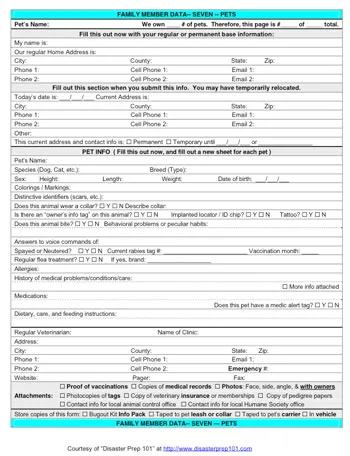
If someone had to evacuate your cats for you, would they know where to start? Would they know how many cats you have, their names, your veterinarian’s office? If any need medications?
With just a few minutes of preparation, you can gather all that information together thanks to a free form from http://www.disasterprep101.com.
To download the form, just click here or on the image above to download a printable PDF where you can record information on each of your pets.
Keep a copy for yourself, leave a copy with your neighbors, take a photo of it with your phone and put a copy away for safekeeping, such as in a safety deposit box.
We’d also recommend adding your cat’s microchip number to this form so you’ll have that handy in case he is lost.
Avoid Losing Pets
Petco has issued some more helpful tips for evacuating cats and all your animals during times of disaster, starting with these tips BEFORE you evacuate:
- Keep pets inside. A pet left outside in the elements can be injured or die, or can become easily lost.
- Keep current photographs of pets with important documents. If a pet is lost during a disaster, a sharp, recent photo can be used to make flyers.
- Keep an up-to-date identification tag securely fastened on pets. If a pet gets out or flees from a scary scene, this will greatly increase the chance they will be returned. Take this measure even for indoor cats. Use breakaway collars, and make sure cats can slip their head out if the collar gets caught on something. Having a cellular telephone number on a pet’s ID tag instead of a home number is recommended because if there is an evacuation, no one will be home to answer phone calls. Also consider getting microchip IDs for animals.
We also recommend having a list of cat-friendly hotels ready–on a variety of routes. If it looks like you will need to evacuate, call the hotel directly and let them know you will be bringing pets–and book EARLY. (See our article on how to evacuate to a hotel with your cats for tips at the hotel.)
How to Evacuate Your Cat
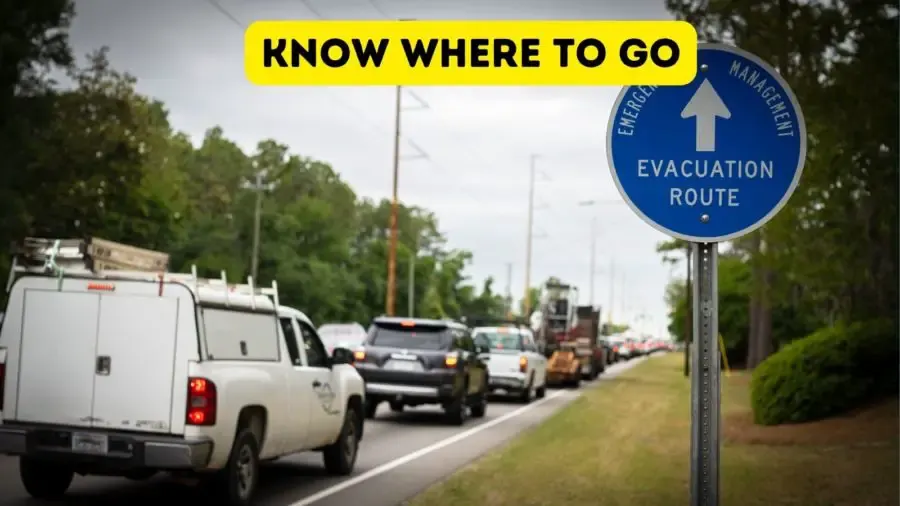
The actual time of loading your pets and moving–sometimes very quickly in advance of a storm, fire or flood–is frightening to everyone. Petco offers these tips on the actual transport and evacuation of your pets:
Do not leave pets behind during evacuations. Take all pets including birds, reptiles, hamsters, rabbits, etc. In case of an emergency evacuation, it is always a good idea to keep an extra harness in vehicles, as well as an emergency kit as an extra precaution. Also, make sure to keep a carrier and seatbelt harness for each pet in the car to ensure safe transportation of pets.
Put the pet’s name along with the pet parent’s name and phone number on the crate or habitat that the pet will be transported in. This will ensure someone can reach pet parents that are separated from their animal. It is important to keep pets from different species as separate as possible and maintain the best possible hygiene in order to decrease disease transmission.
When transporting animals, park or move the car close to the house and ensure the car is warmed up before putting an animal inside. When using a carrier to transport a pet, cover the carrier for transport to and from the car to help prevent exposure to the elements, but remove the cover once in the car for better ventilation. Plan travel routes in advance so animals are taken directly to intended destinations and take the animal inside the new location first prior to bringing in any other item.
As a precaution, make advance arrangements by checking with a veterinarian, local animal hospital, kennel or shelter to see if pets can be boarded during a disaster. Be prepared to submit current medical records. Put together a “pet network,” in which arrangements are already made with someone outside of the immediate area to care for each other’s pets in a crisis.
Make sure to have a pet “emergency kit” on hand. This waterproof bag should include pet food and dishes, bottled water, treats, a can opener, medications, potty pads, paper towels and cleaning supplies, copies of pets’ medical records (in a waterproof container), toys, leashes, harnesses, collars, current photos and contact numbers. It’s also important to have a pet’s regular medications. Keeping familiar beds and blankets in the emergency kit can help put pets at emotionally at ease if they are evacuated to an unfamiliar location. For cats, also pack disposable litter pans, litter and a scoop. Always have at least one week’s supply of water in storage for animals. If the drinking water gets contaminated in a disaster, it’s not safe for people or pets.
Keeping Pets Mentally and Emotionally at Ease
After you evacuation and you wait for a storm to arrive, tensions rise–and your cat knows it. These Petco tips are designed to help keep your pets at ease:
- Bringing along their favorite blanket or toy can often help ease anxiety. There are also calming agents and products like the Thundershirt.
- Ten minutes of thinking play can equal 45 minutes of active, outdoor play for pets. During stressful situations such as evacuations or storms, keep pets mentally stimulated and entertained with food puzzles.
- During extreme temperatures, make sure a pet is comfortable. Make sure pets have a warm place to sleep, off the floor and away from all drafts. A cozy bed with a warm blanket or pillow can do wonders for keeping pets emotionally happy.
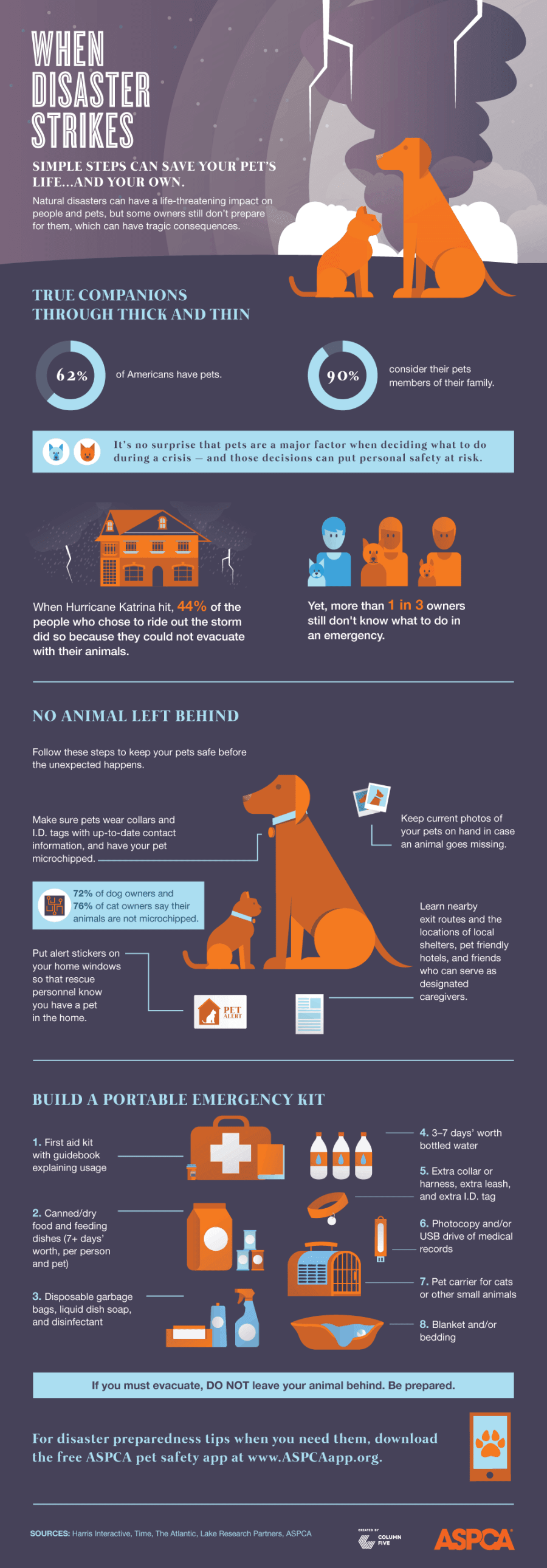
- 🎉 GIVEAWAY: Lord of the Pets Portrait of Your Cat! - November 26, 2024
- Review: Lord of the Pets Cat Portraits! - November 26, 2024
- Cat Adoption: FAQ You Might Have - June 28, 2024
